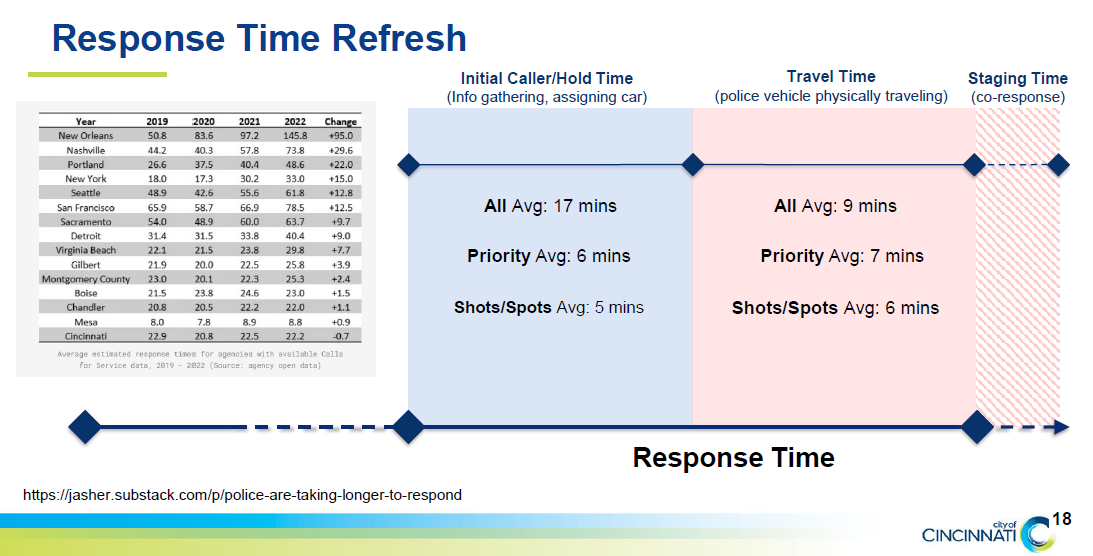CINCINNATI — A new report from Cincinnati police shows closing district five police headquarters did not negatively impact response times.
The new data shows response times decreased on average across the city by 3 minutes and 30 seconds. The department analyzed police response times from the 90 days prior to district five closing on November 12, to the 90 days after it closed.
"Actually, the data is showing our response time has decreased into the calls for service," said Chief Teresa Theetge, Cincinnati Police.
Keep in mind, the data is limited from the time period after November 12, 2023 until February 10, 2024.

"What's going to be critical now, is we continue to monitor this so as we go into the summer months when we start to see our peaks and calls for service and crime that we continue to strive for a reduction in response times, to those calls as compared to last summer," said Theetge.
On Tuesday during Cincinnati City Council's public safety and governance committee, Dr. Jillian Desmond, a crime analyst for Cincinnati Police, presented the boundary changes, and explained response times in three sections. Those sections include the initial call/hold time, travel time for officers and staging time. Looking at more than 28,000 calls during a 90-day period, the city averaged 17 minutes a call, with nine minutes to get to a scene. However, time decreased during an emergency like a shooting, where the call time averaged five minutes, with the travel time averaging just six minutes.


"So it gets really really complicated," said Desmond. "It all varies on how serious the incident is, the circumstances and in some cases calls can open and close so citizens can resolve their issue or perhaps the suspect is out of sight now or has left or they don't care to have an officer respond. That can almost, I don't want to say, screw up the data, it just turns into a way where we can't capture what a response time is."
There's also some other unknowns about the 90 days of data and why the call times decreased.
"Did this change happen by random chance, or could it be something else and the ones I did not show could still be random chance? We still have not ruled out that fact that the change is not big enough or consistent enough," added Desmond.
"I'm hopeful that we will show the reduction is continuing when we compare this summer 2024 to summer 2023," said Theetge.

Ken Kober, the president of Cincinnati's Fraternal Order of Police is skeptical about the 90 days of data.
"Crime is down, calls for service are typically down because it's cold. People are in their houses and they're not outside," said Kober. "The question is really going to be 'what is going to happen when we do get that uptick in violence?' When it comes to spring, increased radio runs, are those response times going to stay the same, or are they going to change and how drastic are they going to change?"
We asked Theetge about those concerns.
"I truly understand that skepticism that they may have and that's why we're going to continue to monitor the data very closely daily as we have since we closed district 5," said Theetge.
Cincinnati police said officers will continue to monitor the data during the spring and summer months, to see how it could change during those peak times of the year for service.





